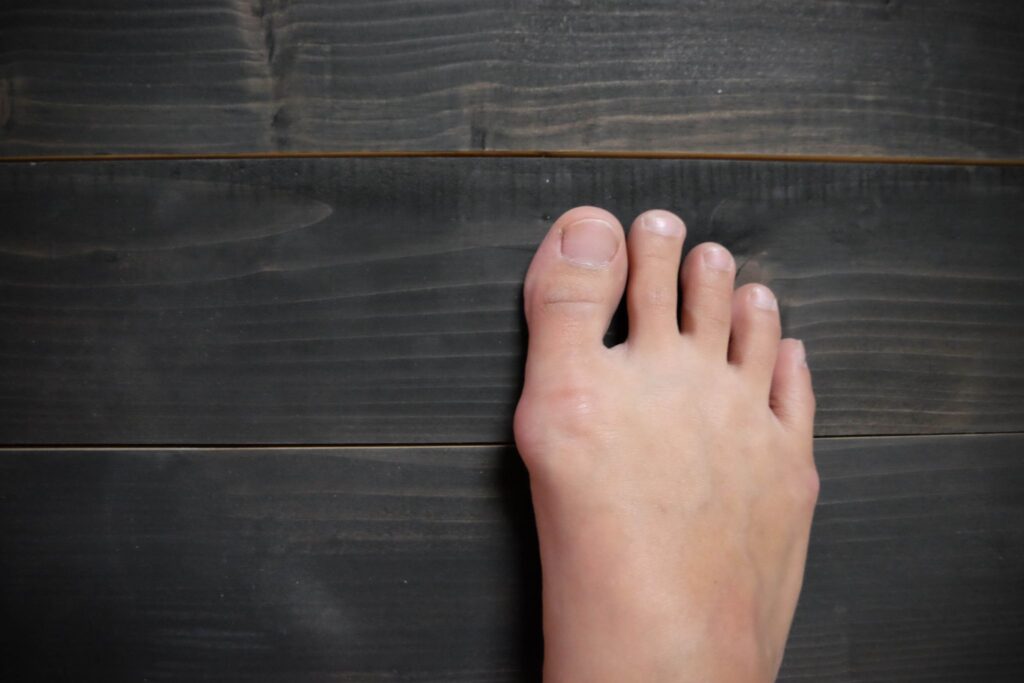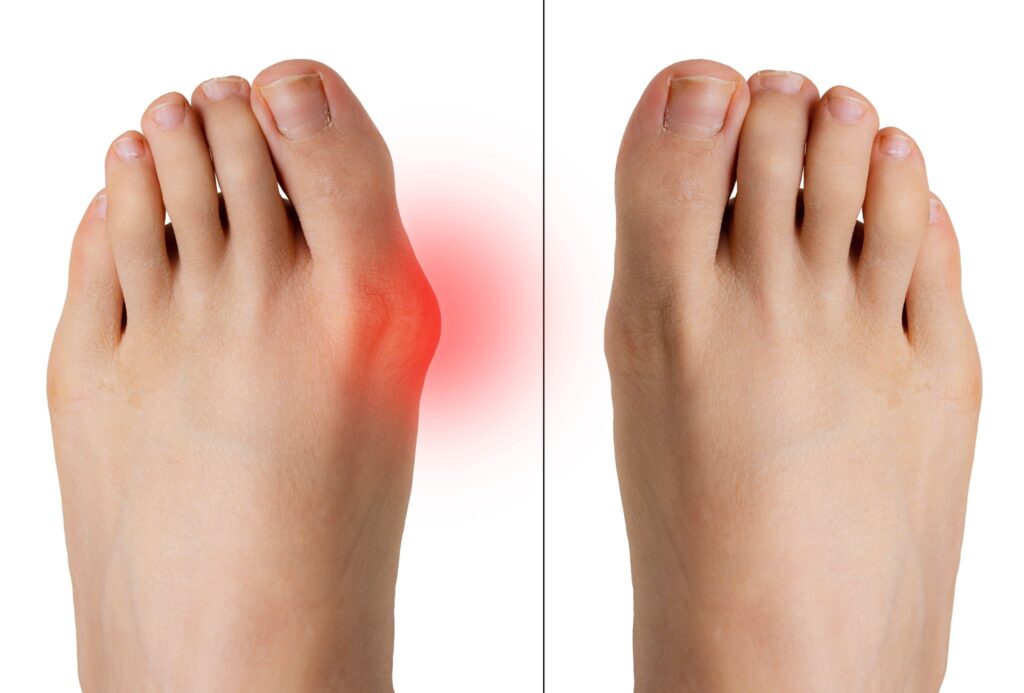Comment choisir la meilleure chaussure pour oignons pour soulager les oignons

Qu'est-ce qu'un oignon ?
Un oignon – également connu sous le nom d’Hallux Valgus – est une bosse osseuse qui se forme à la base du gros orteil. Prédominant chez la femme, ce trouble osseux survient lorsque le gros orteil se penche vers l’orteil juste à côté. En conséquence, l’articulation commence à dépasser au lieu de rester droite.
Qu’est-ce qui cause les oignons ?
Il existe plusieurs causes connues concernant le développement d’un oignon. Certains d'entre eux incluent le type de pied héréditaire que vous pourriez avoir, la mécanique du pied, les blessures au pied, l'arthrite et les affections qui influencent vos muscles et vos nerfs.
Bien que le port de chaussures mal ajustées avec un bout pointu aggrave la situation, ce n’est pas ainsi que les oignons poussent. Cependant, les paires de chaussures à oignons sont utiles pour les personnes qui en souffrent, c'est pourquoi nous sommes là pour vous aider.
Les oignons peuvent-ils être traités ?

Oui, ils le peuvent, à condition que vous preniez les bonnes précautions. L'un des moyens les plus simples de traiter les oignons est de porter des chaussures à oignons. Il est préférable d'opter pour une chaussure à oignon qui soutient chaque partie de votre pied et qui doit avoir suffisamment d'espace pour vos orteils afin de permettre à l'oignon de s'adapter confortablement. Il est également préférable que les chaussures aient des talons souples et robustes qui ne mesurent pas plus d'un pouce. Cela évite qu’une pression ne soit appliquée sur l’avant du pied. Si vous ne pouvez pas vous permettre de nouvelles chaussures, vous pouvez simplement prendre vos anciennes chaussures et les faire modifier en fonction de vos besoins. Une chose à garder à l’esprit est de rester à l’écart des chaussures qui pourraient être fines ou inconfortables au niveau des orteils, car cela peut entraîner un oignon douloureux et plus gros.
L'utilisation de coussinets sur l'oignon peut également aider à améliorer son état si ce n'est pas trop douloureux. Ceux-ci aident à soulager la douleur en apportant un soutien et en réduisant les irritations. Cependant, assurez-vous de parler à votre médecin avant d'utiliser cette méthode pour vous assurer que le coussin n'applique pas encore plus de pression et n'aggrave pas la blessure.
Des médicaments pourraient vous être administrés si rien d’autre ne fonctionne. Des médicaments anti-inflammatoires sont utilisés parallèlement aux blocs de glace qui réduisent le gonflement. Si rien d’autre ne prévaut, des chirurgies des oignons sont également disponibles pour corriger les déformations qui pourraient être présentes dans le pied.
Où acheter les meilleures chaussures à oignons ?
Si vous avez un oignon, vous savez déjà à quel point il est difficile de trouver des chaussures adaptées à votre pied. Pour ralentir la progression de votre oignon, lisez la suite et nous veillerons à vous fournir toutes les connaissances nécessaires pour transformer votre inconfort en un confort extrême.
La toute première chose à faire est de contacter votre médecin. Ceci est essentiel, car le médecin vous indiquera quelles chaussures à oignons vous conviendront le mieux. Cependant, si vous êtes pressé, voici comment trouver la meilleure chaussure à oignons.
Bien que la plupart des magasins proposent des chaussures à bout large avec des talons robustes, l'un des meilleurs endroits pour se procurer des chaussures à oignons est Confort Orthopédique.
Confort Orthopédique fournit non seulement à ses clients des chaussures et des pantoufles pour oignons, mais vend également d'autres articles comme des coussins de rembourrage et des crèmes pour aider les personnes qui souffrent de cette maladie. Le coussinet en gel pour oignon évite le frottement de l'oignon avec la chaussure, ce qui diminue l'aggravation. Confort Orthopédique propose également la crème de jour baume pour oignons, qui hydrate les oignons et soulage la douleur. Des enveloppes de compression , des civières d'oignons et des protège-gels sont également disponibles.
Certaines des meilleures chaussures à oignons dont ils disposent incluent sandales orthopédiques femme hallux valgus. Tous ces éléments ont été spécialement conçus pour aider les personnes souffrant d'oignons.
Quelles caractéristiques votre chaussure à oignons doit-elle avoir ?

Puisque vous devez vous assurer que votre chaussure à oignon s'ajuste correctement, voici quelques fonctionnalités qui, selon nous, pourraient vous aider à trouver des chaussures de prédilection.
- Jugez la pointure après l'avoir essayée, plutôt que de simplement croire ce que dit l'étiquette de taille. La coupe varie d'une entreprise à l'autre et vous voulez une chaussure bien ajustée qui n'appuie pas sur votre oignon.
- Essayez d'acheter des chaussures fabriquées dans un matériau plus extensible afin que la chaussure puisse s'étendre jusqu'à votre oignon sans vous blesser ni vous irriter.
- La poche pour balle de la chaussure doit s'adapter parfaitement à la plante de votre pied. Cela garantira que la chaussure n'est pas très serrée.
- Éloignez-vous des chaussures dont le talon pourrait dépasser 2 pouces.
- Beaucoup de gens ne le savent pas, mais il est préférable de mesurer vos deux pieds. Ceci est crucial car, dans certains cas, un pied est plus grand que l’autre. Vous devez vous assurer d’obtenir l’ajustement du pied le plus grand.
















